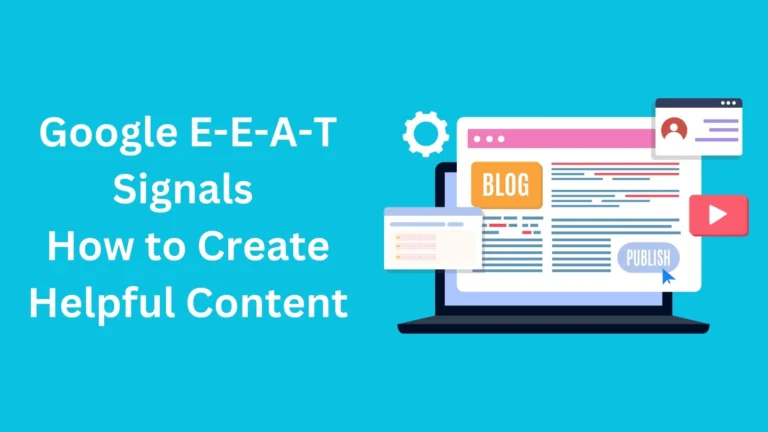How to Find & Create Evergreen Content That Brings Traffic for Years

Creating evergreen content is one of the most effective ways to drive consistent, long-term traffic to your blog. Unlike time-sensitive articles, evergreen content maintains relevance over time, appealing to readers with its lasting value. In this guide, we’ll cover what evergreen content is, why it matters, and how you can create high-quality posts that attract readers for years to come.
Definition of Evergreen Content
Evergreen content refers to articles or blog posts that remain relevant, useful, and valuable to readers regardless of when they’re published. This type of content addresses universal needs and interests, ensuring it doesn’t lose its appeal over time. Examples of evergreen content include guides, how-tos, tutorials, and listicles.
Importance of Evergreen Content for Bloggers
For bloggers, evergreen content is invaluable. It drives steady traffic, boosts SEO rankings, and builds a loyal audience by addressing ongoing reader needs. By investing time in creating evergreen content, you’re setting your blog up for sustainable growth.
Why Focus on Evergreen Content?
Focusing solely on trendy or seasonal content can lead to a decline in traffic as trends fade. In contrast, evergreen content helps maintain a steady influx of visitors. The traffic from each post should ideally stack on top of each other, contributing to exponential growth. This is why evergreen content is key for any website aiming for long-term success.
Characteristics of Evergreen Content
Evergreen content typically has several defining characteristics:
- Timelessness: It does not specify a particular time, date, or event.
- Sustained Search Interest: It continues to attract searches over time.
- High Value: It provides significant value to readers.
- Low Maintenance: It requires little to no updates to stay relevant.
Identifying Evergreen Topics
To create evergreen content, you need to start by identifying suitable topics. Common formats for evergreen content include:
- How-to Guides: For example, “How to Start a WordPress Blog.”
- Listicles: Such as “Top Productivity Tools for Remote Workers.”
- FAQs: Like “What is SEO and How Does It Work?”
- Glossaries: Definitions such as “Glossary of Grilling Techniques.”
- Case Studies: For instance, “How Our Company Grew Traffic by 300% Using SEO.”
Identifying Evergreen Content Opportunities
Finding evergreen content ideas requires a mix of audience understanding, keyword research, and exploration of popular topics in your niche. Here’s how to start.
i) Analyzing Audience Needs and Interests
The first step is to understand what your audience truly values and the questions they frequently ask. Look into your blog analytics to see which posts are popular, and check comments or feedback to spot recurring questions. Social media, forums, and community sites like Reddit or Quora are also great places to gauge what people are consistently searching for in your niche.
ii) Using Keyword Research Tools
Keyword research tools like Google Keyword Planner, Ahrefs, and SEMrush are essential for finding evergreen content topics. Look for keywords with a high search volume but low competition, focusing on long-tail keywords. Long-tail keywords often reflect specific search intent, like “how to save money on travel,” making them great for evergreen content.
iii) Exploring Popular Topics in Your Niche
To identify timeless topics, explore successful blogs within your niche and take note of their top-performing evergreen articles. Aim to fill any gaps, provide deeper insights, or offer unique angles on similar subjects. Some popular evergreen topics include “beginner’s guides,” “tips and tricks,” or “best practices” posts, as they cater to common interests and timeless needs.
Creating High-Quality Evergreen Content
Once you’ve identified potential topics, the next step is creating content that will stand the test of time. Here’s how to craft engaging, valuable evergreen posts.
i) Crafting Compelling Headlines
A strong headline captures attention and tells readers exactly what they’ll gain from your article. Use clear, descriptive language and consider including numbers, such as “10 Tips for…” or “5 Ways to…”, which often perform well with audiences. For example, “10 Essential Tips for Starting a Blog” is clear, compelling, and evergreen.
ii) Incorporating Timeless Information
Focus on providing information that will be as valuable in a few years as it is today. Avoid referencing temporary events, seasonal trends, or time-specific data that might quickly become outdated. Instead, choose examples, tips, and techniques that are broadly applicable. This way, readers can always find your content relevant and helpful.
iii) Utilizing Visuals to Enhance Engagement
Visuals like infographics, images, and diagrams can improve readability and help communicate complex information more effectively. High-quality visuals also make your content more shareable on social media, extending its reach. Creating original images or using tools like Canva to design infographics adds a unique touch to your posts, increasing engagement.
Optimizing Evergreen Content for SEO
Optimizing evergreen content for search engines ensures it reaches your audience. SEO-friendly content continues to rank well over time, making it easier for readers to find.
i) Best Practices for On-Page SEO
On-page SEO helps search engines understand and rank your content. Ensure each article has relevant keywords in the title, headers, and throughout the body text. However, avoid keyword stuffing. Instead, focus on natural placement of keywords within the content. Use headers and subheaders to organize your article, making it easier for readers to scan and for search engines to crawl.
ii) Building Internal and External Links
Linking to other articles on your site helps readers discover more of your content and encourages them to spend more time on your blog. Additionally, include external links to reputable sources, which enhances your content’s credibility. Both internal and external links contribute to your SEO efforts by signaling to search engines that your content is well-rounded and authoritative.
iii) Utilizing Meta Descriptions and Alt Text
A meta description is the brief snippet displayed in search results. Craft a concise, informative meta description that incorporates your target keywords, as this can increase click-through rates. Additionally, use alt text for images, as it helps with image SEO and makes your content accessible to all readers.
Promoting Your Evergreen Content
Creating evergreen content is only half the job; the next step is to promote it effectively. Consistent promotion keeps your content in front of a fresh audience.
i) Sharing on Social Media Platforms
Regularly share your evergreen posts across social media platforms. You can re-share these posts every few months to reach new followers or remind existing ones. Platforms like Twitter, LinkedIn, and Facebook allow you to repurpose old content to keep it relevant and engaging.
ii) Utilizing Email Marketing
Email newsletters are a great way to share evergreen content directly with your audience. You can feature it as a “recommended read” or create a special edition email highlighting your best evergreen pieces. This approach not only increases readership but also strengthens relationships with your subscribers.
iii) Engaging with Online Communities and Forums
Participating in forums like Quora, Reddit, or niche communities lets you share links to relevant evergreen posts. Look for questions related to your content, and provide a helpful answer that includes a link to your article for more in-depth information.
Measuring the Success of Your Evergreen Content
Tracking the performance of your evergreen content helps you identify what’s working and what could be improved for greater longevity and traffic.
i) Tracking Traffic and Engagement Metrics
Use tools like Google Analytics to monitor page views, bounce rates, and average time on page for each evergreen post. High traffic and engagement indicate that your content resonates with readers, while high bounce rates might mean that some updates or adjustments are needed.
ii) Using Analytics Tools for Insights
In addition to Google Analytics, platforms like Ahrefs or SEMrush can offer insights into how your content performs in search engines. Tracking keyword rankings, backlinks, and organic traffic over time can help you measure the long-term impact of your evergreen posts.
Making Adjustments Based on Performance Data
If you notice your evergreen content underperforming, consider making tweaks based on analytics data. Small adjustments to keywords, headlines, or images can often improve engagement and search rankings, increasing the content’s value over time.
i) Updating and Refreshing Evergreen Content
Even evergreen content benefits from occasional updates to keep it fresh and relevant for new audiences.
ii) Recognizing When to Refresh Content
A good rule of thumb is to review your evergreen content every 6-12 months. Look for signs of declining traffic, outdated examples, or changes in SEO best practices as indicators that it’s time for an update.
iii) Incorporating New Trends and Information
If relevant trends or updated statistics emerge, incorporate these into your content. Adding new sections, examples, or insights keeps the information valuable to readers, ensuring it continues to rank well and attract traffic.
iv) Maintaining Relevance Over Time
To maintain relevance, keep your evergreen content aligned with evolving reader needs. Monitoring comments and feedback can help you identify sections that could be clarified or expanded upon.
Conclusion
Incorporating evergreen content into your blogging strategy is essential for sustainable traffic and long-term growth. By understanding your audience’s needs, optimizing for SEO, and consistently promoting your content, you can build a collection of posts that bring lasting value. Start creating evergreen content today to grow your blog and build a loyal readership that keeps returning.
Related Articles
Guide to Content Creation
How to Create Helpful Content – EEAT Google

With 5+ years of SEO experience, I’m passionate about helping others boost their online presence. I share actionable SEO tips for everyone—from beginners to experts.

